WHAT IS BACKBONE PAIN? TYPES OF BACKBONE PAIN, UPPER BACK PAIN, LOWER BACK PAIN, ,MIDDLE BACK PAIN, CAUSES, HOW TO CURE PAIN? WHAT CAUSES OF BACK PAIN CAUSES IN FEMALES?
- BACKPAIN DEF:
- TYPES OF PAIN
- FEMALES BACKPAIN CAUSES
- UPPER,LOWER,MIDDLE BACKPAIN
- DIAGNOSIS
- TREATMENT
WHAT IS BACK PAIN?
1- Common back pain conditions: Muscle or ligament strain. Repeated lifting by heavy loads or sudden strange movements can strain the back muscles and spinal ligaments. If you are in poor physical condition, constant pressure on your back can lead to muscle aches.
2- Back pain is one of the most common causes for people to go to the doctor or lose their job, and it is the leading cause of disability worldwide.
Fortunately, you can take steps to prevent or alleviate most episodes of back pain. If prevention fails, simple home remedies and proper body mechanics will often cure your back and work within a few weeks. Surgery is rarely needed to treat back pain.
TYPES OF BACKPAIN:
5 Types Of Back pain
1. Flexion Major Back pain
Often, this type of back pain is described as a disc injury (although this is not always the case).
- Symptoms may be exacerbated by sitting, bending, or lifting
- Symptoms improve with short standing and walking
- There may be back pain, leg pain or both
- May experience tingling / numbness
- The leg progresses to weakness
- Cough / sneeze is often painful (but not always)
- Loss of range of motion (difficulty getting up from sitting)
Effective care for flexion dominant pain includes directional exercise / stretching throughout the day to maintain your spinal range of motion and reduce pain. After doing this stretch, you should feel less pain and your back feels more flexible. The right stretching for you is best determined by a trained physiotherapist, but is often a good place to start for a passive, repetitive extension of the pelvic spine.
2. Extension Dominant / Prolong Large Back pain
Extension The main pain is often described as zygophyseal joints (or Z-joints) in terms of the joints in the back of the spine. Again, this is often part of the problem, but not always. Extension major pain tends to follow a recognizable pattern:
Signs And Symptoms:
- Pain after prolonged standing
- Temporary relief from sitting or bending
- The range of motion is usually constant and does not change over a short period of time.
- The back may be rigid, but it is always tight
- Pain after high impact activities (running or gymnastic movements)
- Usually there is localized back pain
- In severe cases there may be pain, tingling or even numbness in the legs.
Care for the extension The main pain is guided by finding ways to reduce the stress on the extension on the spine. People who suffer from this type of pain often have their backs bent. Specific abdominal stabilization exercises and hip mobility stretches (especially hip flexor stretches) are effective. Using mid-bent postures can also help to relieve pain. Pain-relieving therapies such as acupuncture or manual therapy also play a temporary role.
Long-term care focuses on spine / core strength and stability with good hip movement. Once your pain is under control, the treatment program becomes more aggressive. The goal is to build muscle around the spine as the length of the small hip muscles increases.
3. Neurogenic Claudication
Neurogenic claudication is a specific type of extended dominant back pain that affects the elderly (60+). This is due to the thinning of the nerves when the patient is standing and running, and this significantly limits the patient’s long walking ability.
Signs And Symptoms:
- Usually no symptoms are seen while sitting
- When getting up and walking: Pain, numbness or weakness in the legs begin after the estimated time (length of time depends on severity)
- Most of these patients do not have back pain locally.
- Once the symptom begins, the patient should sit or lean forward to reduce symptoms
- For example, some patients tend to lean on a shopping cart so that they can walk without symptoms
When patients with neurogenic claudication develop severe inflammation, their gait tolerance is greatly reduced and they need to take frequent breaks to allow their nerves to heal. These patients should be given a variety of flexion-based stretches and strategies to use throughout the day and temporarily reduce walking distance. When symptoms subside, training and exercises to reduce the anterior arch of the pelvis are stopped. These patients should not try to ‘fight the pain’ or ‘train’ forward, it is like throwing fuel on a fire.
Restorative care for a person with neurogenic claudication should aim at two main priorities: First, abdominal strength should be adequate so that the person can walk without falling into a spinal or extended position; Second, the pelvis should be mobile so that the patient does not bend forward while standing and walking.
The stronger and more dynamic a patient is, the more likely he or she will be out of decompression surgery to make room for the nerves. A physiotherapist who is well trained in spinal care can design an exercise program to reduce persistent waist extension while walking.
4. Swollen / Inflammatory / Back pain
Inflammatory back pain is less common than mechanical back pain, but is often misdiagnosed. This type of pain is caused by excessive inflammation in the joints of the spine, which is a medical condition that causes the immune system to attack the joints of the spine. Ankylosing spondylitis is an example of a condition that can cause back pain. However, there are many conditions that can lead to swollen back pain.
The physiotherapist's job is to diagnose the pain as inflammation and return the patient for a medical evaluation (often by a rheumatologist) and further testing. However, after the diagnosis is made and medical management is done, the physiotherapist will help with the management of the symptoms.
Signs And Symptoms
- The onset of pain is usually in patients less than 35 years of age and is not due to injury
- The pain lasts for more than three months
- Back pain and stiffness worsen without moving, especially at night and in the morning
- Back pain and stiffness can be reduced through physical activity and gentle exercise
- Anti-inflammatory drugs (such as NSAIDs, ibuprofen or naproxen) are effective in reducing pain and stiffness in most patients.
- There is some evidence to suggest that turmeric can be used as a natural way to reduce inflammation without the side effects of anti-inflammatory drugs.
Patients should be given a management plan that teaches relief positions, as well as activities to prevent fires. Unfortunately with physiotherapy there is no way to reverse the natural condition, but a light exercise program can help maintain mobility and reduce pain. When symptoms are well controlled and pain levels are low, the patient can use a more aggressive recovery program designed by a skilled physiotherapist. In addition, some low-impact functional strength training may be helpful.
5. Chronic Pain Disorders
Back pain is one of the most challenging conditions for medical professionals to treat. The nervous system usually describes stimuli that are painful or not harmful to the body, while the brain perceives it as painful. This is a complex issue that requires a deep understanding of the patient, and brought them to this place.
It was very frustrating for patients when medical experts repeatedly told them there was no organic cause for their pain. It is important to note that the pain experienced by these patients is physically similar to that suffered by mechanical injury. Simple treatments do not help these patients. He has been best served by working with a multidisciplinary healthcare team, including a physiotherapist with a strong understanding of pain science.
Signs And Symptoms
- There is so much difference
- Pain does not follow specific physical boundaries
- The painful area may not migrate to contain other parts of the body.
- Pain is exacerbated by anxiety or depression
- Increasing and decreasing pain is not associated with mechanical injury or physically stressful events
Patients with pain disorders often experiment with pain relief techniques to find a combination that works for them. Physiotherapists should guide these patients to understand their pain and to maintain physical fitness and function. It is also important to check for complex factors such as anxiety or depression that may be causing the problem. These issues should be addressed by a trained professional. Pain disorders of this nature are not common.
Final Ideas / Thoughts
There is no one-size-fits-all treatment for every type of back pain. Even after establishing a proper diagnosis, an expert physiotherapist will work with the patient on a treatment plan focusing on the factors that are driving the specific problem.
UPPER BACKPAIN:
Upper back pain is usually the result of poor posture, muscle overuse or injury. Treatment may include home remedies such as rest and gentle exercise or a visit to a physical therapist. The upper back is the area between the base of the neck and the bottom of the ribs.
Common Causes Of Upper Back Pain:
When upper back pain occurs, it is most often caused by injury caused by muscle irritation or joint dysfunction. Some common causes of upper back pain are:
- Poor posture.
Maintaining a sedentary lifestyle or not sitting for long periods of time regularly can lead to structural changes in the back and neck. The muscles decompose and weaken, so the spine cannot be placed as easily as before in a neutral position. The head and shoulders bend forward, putting more pressure on the bones, discs, muscles, tendons and other soft tissues in the spine. If a person often leans to one side, such as while driving or working on a computer, it can lead to a painful upper back imbalance.
- Improper lifting technique.
Lifting a heavy object without aligning the spine puts unnecessary pressure on the upper back. In particular, lifting or holding a heavy object over the head, especially as opposed to focusing too much on the left or right side, can cause injury to the shoulders and upper back. Lifting very heavy objects can also cause pain in the upper back.
- Overuse.
Doing more work than usual for a friend moving to a new apartment or doing ceiling painting (working on the top of the head) can cause muscle strain, tendon sprains and swelling in the upper back. The reason.
- Accident or collision.
Back pain can be caused by a car accident (car or bike accident), falling from a height (from a step or ladder) or a collision with a sport (football, hockey, etc.) that injures bones, discs, and muscles. Spine. Tendons, nerves and / or other soft tissues.
Sometimes there can be a combination of factors such as overuse and improper lifting technique.
Less common causes of upper back pain
- Thoracic herniated disc.
Although herniated discs in the thoracic spine are not uncommon, it is very rare for one to cause pain or other symptoms. In general, natural age-related spinal degeneration is more likely to cause symptoms in the cervical spine and lumbar spine.
- Compression crack / fracture
Usually due to osteoporosis in the elderly, the vertebrae become weak and unable to fully support the weight above it. Small fractures develop in the anterior part of the vertebrae, which shrink and form a vertebral fissure shape. If the vertebra loses enough height, it can cause posture changes and be painful.
- Gout / arthritis
Different types of arthritis can occur or spread in the thoracic spine, such as osteoarthritis (from natural wear and tear) or rheumatoid arthritis (autoimmune disease).
- Fibromyalgia
This condition is known for widespread pain and fatigue throughout the body, usually affecting the upper back.
- Severe deformity of the spine.
If the deformity of the spine progresses enough, it can lead to painful muscle spasms and even strain on the discs and joints. Some examples include Schuermann kyphosis and scoliosis.
There are many other causes for upper back pain, such as infection or tumor pressure on the spinal cord.
LOWE BACK PAIN :
Very low back pain is like the stress caused by sudden movements or poor body mechanics when lifting muscle spasms or heavy objects.
Low back pain can also be the result of certain diseases, including:
- Spinal cord cancer
- Ruptured or herniated disc
- Hip pain
- Arthritis
- Kidney infection
- Spinal cord infection
- Severe back pain can last from a few days to a few weeks, while chronic back pain can last more than three months.
Low back pain is more common in people between the ages of 30 and 50. This is partly due to the changes that take place in the body with age. The fluid between the vertebrae in the spine decreases as you age.
This means that the discs of the spine are more easily irritated. You will also lose some muscle tone, which increases your chances of back injury. Strengthening your back muscles and using good body mechanics can help prevent back pain.
Causes Of Low Back Pain:
- Strains
Excessive activity can stretch or tear the muscles and tendons behind. Symptoms include low back pain and stiffness, as well as muscle cramps. Relaxation and physical therapy are treatments for these symptoms.
- Disc injury
The posterior discs are prone to injury. This risk increases with age. The outer part of the disc may rupture or become herniated.
- Herniated disc.
Also known as slipped or torn disc, occurs when the cartilage surrounding the disc is pushed against the spinal cord or nerve roots. The cushion between the vertebrae of the spine is beyond its normal position.
It leads to nerve root compression from the spinal cord and through the vertebrae. Disc injuries usually occur suddenly after lifting anything or bending backwards. Unlike a back strain, pain from a disc injury usually lasts more than 72 hours.
- Hip pain
A herniated disc is formed when the nerves in the back of the hip press on the nerves. The nerves in the back of the hip connect the spine to the legs. As a result, sciatica can cause pain in the legs and feet. This pain usually feels like burning or pins and needles.
- Spinal stenosis
Spinal stenosis occurs when the spinal column contracts, putting pressure on the spinal cord and spinal nerves.
Vertebral stenosis is usually caused by degeneration of the discs between the vertebrae. The result is compression by bone spurs or soft tissues such as nerve roots or spinal discs.
Stress on the spinal nerves can cause symptoms such as:
- Numbness
- Patting
- Weakness
You can experience these symptoms anywhere in the body. Most people with spinal stenosis have more severe symptoms when standing or walking.
- Abnormal curvature of the spine
Scoliosis, kyphosis and lordosis are all conditions that cause abnormal curvature in the spine.
These are congenital conditions that are usually diagnosed in childhood or adolescence. Abnormal curvature causes pain and weak posture because it causes stress.
- Muscle
- Tendon
- Tendons
- Vertebrae
There are many other conditions that can cause low back pain. These terms include:
- Arthritis
- Fibromyalgia
Is a chronic pain and tenderness in the joints, muscles and tendons.
- Spondylitis
is an inflammation of the joints between the bones of the spine.
- Spondylosis
A degenerative disorder that causes loss of normal spinal structure and function. Although aging is the primary cause of this condition, the location and rate of decline are unique to the individual.
Additional health conditions that can cause low back pain:
- Kidney and bladder problems
- Pregnancy
- Endometriosis
- Ovarian cysts
- Cervical / Uterine fibroids
- Cancer
MIDDLE BACKPAIN:
Low back pain occurs in the area called the thoracic spine, below the neck and in the lower part of the rib cage. There are 12 posterior bones in this area - the T1 to T12 vertebrae. There is a disc between them.
The spinal cord protects the spinal cord. The spinal cord is a long bundle of nerves that allow it to communicate with the rest of the brain.
The spinal cord, muscles, tendons and discs can irritate or injure nerves in many ways, leading to back pain.
CAUSES OF MIDDLE BACKPAIN:
1. Poor posture
Repeated pressure on the spine causes low back pain. In some cases, poor posture can cause this stress. You need to work harder to keep yourself balanced when your back muscles and ligaments flex. Overwork of these muscles can lead to soreness and back pain.
2. Obesity
A meta-analysis of 95 studies on weight and low back pain also showed a positive association between obesity and back pain. As the weight increases, so does the risk of back pain.
3. Muscle sprain or strain
Sprain is a tendon tear or stretch. Stress is the tearing or stretching of muscles and tendons. Lifting heavy objects regularly, especially without proper form, can easily sprain or strain a person's spine. Sprains and strains can also occur after awkward and sudden movement.
4. Fall or other injury
The posterior part between the cervical spine (neck) and the lumbar spine (lower back) is less prone to injury. This is because it is more structured and rigid. However, it is still possible to injure the middle back. These injuries often result in:
- Tight fall from the stairs or from a height
- A car accident
- Blunt force injury
- Sports risk
5. Herniated disc
A herniated disc forms when a gel-like core cartilage inside a disc in your back pushes against the outer ring and puts pressure on the nerve. Herniated disc is also commonly known as slipped disc or ruptured disc.
This pressure on the nerves can cause pain, tingling or numbness in the middle of the spine and affected areas where the nerves travel, such as the legs.
6. Osteoarthritis
Osteoarthritis (OA) is a degenerative joint disease. This happens when the cartilage that covers your joints breaks, causing the bones weakness, stiffness.
WHAT CAUSES OF BACKPAIN IN FEMALES:
There are many back pain and related conditions that women are more likely to develop. Also, for women, back pain can become chronic over time.
Many conditions are common (and may be specific) in women. Problems with back pain usually appear at menopausal age (over 50 years).
Symptoms, diagnosis, and treatment of low back pain
1- Piriformis syndrome
Pain caused by a contraction in your piriformis muscle, a large muscle deep in the buttocks is called piriformis syndrome. 2 Women are most affected due to hormonal and pregnancy related changes in the pelvis.
Piriformis syndrome often mimics hip pain and causes nerve irritation or contraction of the nerves in the hip i.e. the back of the thigh. Piriformis syndrome can be caused by:
- Chronic pain in the hip and hip area is exacerbated by hip movement
- Pain when you get out of bed
- Not being able to sit for long
- The pain radiates to the back of your thigh and leg
- Symptoms usually improve when you lie on your back.
2- Sacroiliac joint disease
Pain from your sacroiliac (SI) joint that connects the lower part of your spine to your pelvis is called sacroiliac joint dysfunction or sacroilitis. SI joint problems are one of the most common causes of low back pain.
Women generally have a smaller SI joint surface area than men, resulting in higher pressure in the joints. The sacrum is wider, more asymmetrical, less curved and more backward in women, leading to problems with the SI joint.
These factors and many other physical differences can lead to SI joint misalignment, especially in young women.
SI joint disease can also cause sciatica-like symptoms. Common features include:
- Low back pain
- Directly above the buttocks is dull or painful, which sometimes turns into a sharp pain
- A sharp, stabbing or shooting pain in your thigh, usually not extending beyond your knee
- SI joint pain usually worsens when you sit, lie on the affected side and / or climb stairs
3- Osteoarthritis of the spine
Wearing of osteoarthritis of the facial joints (the joints that connect your spine) is very common in women. The risk increases with age and / or weight gain.7
Osteoarthritis of the spine breaks down the fibrous cartilage in the facial joints. Without the cushioning provided by the cartilage, your bones will rub together, causing pain. Osteoarthritis of the lower back can be caused by:
- Pain in your upper or lower back, groin, buttocks and thighs
- Stiff back and morning pain
- Occasionally severe pain arises
4-Degenerative spondylolisthesis
View behind degenerative spondylolisthesis in the legs. Degenerative spondylolisthesis video
When the vertebrae in your spine slip over what is beneath it due to atrophy, it is called degenerative spondylolisthesis. This condition is more common in postmenopausal women due to low estrogen levels.
When estrogen is low, the vertebral discs become more incised and the ligaments that hold the vertebrae together become loose - leading to spinal instability. This age group is also more prone to associated vertebral osteoarthritis, which increases the risk of vertebral slip.
- Degenerative spondylolisthesis 9 causes:
- Low back pain with pain spreading to your legs
- Neurogenic claudication (pain when running) if the spinal cord is compressed
- Pain relief usually comes when you bend forward.
5- (tail bone pain)
Pain at the tail end of your spine (coccyx) is most often caused by injury. This condition is more common in women due to differences in pelvic size and angle and trauma during childbirth.
- The coccyx acts as a weight-bearing support while you sit
- Injury to this area causes pain
- Sitting down
- Partially bent backwards while sitting
- Sit on rough surfaces
- Stand from a sitting position
6- Endometriosis
Endometriosis is a gynecological disorder that mainly affects women.
- Painful periods with severe pelvic and lower abdominal pain
- Pain in the genital area
- Low back pain, especially during menstruation.
7- Spinal osteoporosis fractures
Spinal compression fractures in the thoracic spine. When your density decreases, making it brittle and fractured, this condition is called osteoporosis. Osteoporosis occurs when there is a higher rate of damage than the formation of new. By the age of menopause, women are 4 times more likely to develop osteoporosis than men. This imbalance can be caused by the hormone estrogen deficiency, the loss of at a young age and the loss of at a more rapid rate.
DIAGNOSIS OF BACKPAIN:
If there is reason to suspect that a particular condition is causing your back pain, your doctor may order one or more tests:
1- X-ray
These pictures show the alignment of your bones and whether you have arthritis or broken bones. These pictures alone do not show problems with your spine, muscles, nerves or discs.
2-MRI or CT scan
These scans produce images that reveal problems with the herniated disc or bones, muscles, tissues, tendons, nerves, ligaments and blood vessels.
3- Blood test
These can help you find out if you have an infection or another condition that is causing your pain.
4- Bone Scan
In rare cases, your doctor may use a scan for tumors or compression fractures caused by osteoporosis.
5- Neuroscience studies
Electromyography (EMG) measures electrical impulses generated by nerves and your muscle responses. This test can detect nerve compression caused by a herniated disc or narrowing of your spinal canal (spinal stenosis).
TREATMENT:
Most back pain will improve within a month of home treatment. However, everyone is different, and back pain is a complex condition. For most people, the pain does not go away for a few months, but for some only persistent, severe pain.
Using over-the-counter pain relievers and heat may be all you need. Bed rest is not recommended.
Continue your activities until you can tolerate it. Try light activity such as walking and daily living activities. Stop the activity that exacerbates the pain, but do not avoid the activity for fear of pain. If home remedies do not work after several weeks, your doctor may prescribe stronger medications or other treatments.
Drugs / Medications
Depending on the type of back pain you have, your doctor may recommend the following:
Over-the-counter (OTC) pain relievers
Non-steroidal anti-inflammatory drugs (NSAIDs) such as ibuprofen (Advil, Motrin IB, others) or naproxen sodium (Alev) can help relieve back pain. Take this medicine only as prescribed by your doctor. Excessive use can cause serious side effects. If OTC painkillers do not relieve your pain, your doctor may prescribe NSAIDs.
Muscle relaxations
If mild to moderate back pain does not improve with OTC painkiller, your doctor may also prescribe a muscle relaxant. Muscle relaxants can make you dizzy and sleepy.
Topical pain relievers
These products provide pain relievers through creams, salves, ointments or patches through your skin.
Narcotics
Your opioid-containing drugs such as oxycodone or hydrocodone may be used for a short time under the close supervision of your doctor. Opioids do not work well for chronic pain, so your prescription usually provides less than a week of pills.
Antidepressant
Some types of antidepressants - especially duloxetine (Simbalta) and tricyclic antidepressants, such as amitriptyline - provide relief from low back pain independently of their effect on depression.
Physical therapy
A physical therapist can teach you exercises to increase your flexibility, strengthen your back and abdominal muscles, and improve your posture. Regular use of these techniques can prevent pain from recurring. Physical therapists also provide education on how to modify your movements during an episode of back pain to avoid severe back pain symptoms when active.
Surgery and other procedures
Procedures used to treat back pain may include:
- Cortisone injection
If other measures do not relieve your pain, and your pain radiates to your leg, your doctor may prescribe cortisone — a strong anti-inflammatory drug — and a sedative in the area around your spine (epidural space). inj drug can be injected. Cortisone injection helps to reduce inflammation around the nerve roots, but pain relief usually lasts only a month or two.
- Radio frequency neurotomy
In this procedure, a fine needle is inserted through your skin so that the tip is close to the area where you are in pain. Radio waves damage nearby nerves passing through the needle, interfering with the distribution of pain signals to the brain.
- Implanted / Fitted nerve stimulator
Devices placed under your skin provide electrical impulses to certain nerves to block pain signals.
- Surgery
If you have unbearable pain with progressive muscle weakness due to radiation or nerve compression in the leg, you may benefit from surgery. These procedures are usually specialized for pain associated with structural problems such as spinal stenosis (spinal stenosis) or other untreated herniated disc.
Homeopathic Medicine For Back Pain:
1- Rustox
This homeopathic medicine is used to treat muscle pain when the pain subsides with walking and when the pain worsens at rest or on the first move. Hot application gives marked stiffness and relief. Back pain due to sprains; After heavy lifting or pulling; Muscle pain; Getting wet in the rain. Homeopathic medicine for back muscle aches.
Acute pain in the back, like a fracture, is Russia's biggest symptom of back pain. Russ is especially good at breaking down the deep muscles in the back. There is a lot of pain, boredom, bruising and pain when trying to get up.
It is more suitable for chronic forms of lumbago, often with quick relief at times. Russ back pain is better with stress, but worse in bed. Russ patient sometimes prefers to lie down. By bending backwards, the pain of the juice disappears.
2- Bryonia
Bryonia is a homeopathic medicine for back pain whose properties are the opposite of the Russ Toxicodendron remedy. Since the small movement exacerbates the pain, the patient tries to stay as still as possible.
These people are very irritable and angry and do not like to be touched, although stress often helps with pain.
Homeopathy treatment is indicated when the stiffness of the bronchial muscle groups and the headache are normal. Another indication for this remedy is that the heat exacerbates the pain and the cold applications feel better.
3- Hypericum
An excellent homeopathic remedy for nerve pain, especially after surgery or injury. Homeopathic remedy that helps in curing nerve pain. It is especially useful when the numbness or tingling in the extremities, the pain is spreading from one area to another. Homeopathic medicine medicine for slip disc that causes nerve pain. Hypericum radiates to the nerve pathways, worse with movement, and worsens with unbearable prickly pain. This can be beneficial when depression is a symptom of muscle pain.
4- Causticum
Another homeopathic remedy for back pain with muscle aches, weakness and stiffness is worse with effort. The pain intensifies when the weather is dry and gets better during the rainy season,Leg muscles feel tense, tight and painful at night. The front legs are strong but weak. These patients feel better in a warm bed or hot bath.
5- Cimicigua
Homeopathic remedies should be used when there is spasm in large muscle groups. Pain and bruising can occur everywhere in the body and can cause muscle cramps and cramps. The spine feels tender and there is pain especially in the back, neck and shoulders.
Patients with of this medicine feel better with heat and pressure and feel worse during touch, motion, cold applications and their .rushing.
6- Oxalic acid
It can cause severe back pain, which can be relieved by a change in posture. The back looks too weak to support the body. The pain intensifies when I think about them. Weakness and pain with numbness in limbs, low back pain between shoulders, aches and tenderness. Pain is exacerbated by any kind of movement or exertion; Pain in scars.
7- Sepia
Sepia is a homeopathic remedy often prescribed for back pain due to cervical disease. This is a common weakness in the short back when running, and worse when sitting. Sudden pain in the back as if struck with a hammer.
Pressing the back on a hard object will relieve the pain and increase back pain in the morning. The patient is lethargic in the morning and feels better when he is busy with some work.
8- Colosynthesis
The pain in the back is so severe that the patient becomes restless. It is not possible to sit or lie down; The pain eventually settles to the top of the thigh and buttocks. Bending forward often provides relief.
9- kali carb
Homeopathic medicine for back pain. Lumbosacral back pain, pain returning to the legs. Pain, stinging, darting, worse at rest and lying on the affected side. Back pain and weakness after miscarriage, childbirth or extreme ; She feels relaxed and lying down while running.
This remedy is especially suitable for back pain in the sacral region; Back pain during pregnancy; After a miscarriage; Great fatigue; Burning in the spine; Suddenly, sharp pain radiates up and down the waist, and up to the thighs.
10-Nux.vom
Another homeopathic remedy for back pain, especially when prescribed for the spine, is Knox Vomica. It is located in the lumbar region, homeopathic medicine Nux vom, which exacerbates back pain when sleeping at night. Drawing, lacquering or bruising character, possibly sudden stitches in the back, and the symptom of having to bed the patient.
There is also back pain in the morning, and if the patient stays in bed for a long time, the back pain will be more. Excessive intake of Nux stiff neck should be considered for back pain and Nux may also benefit from torticollis.
11-Arnica Montana
The feeling of sharp pain as well as bruising after injury. Back pain, lameness and bruising; Worse, at least touch; Fast, light; Better than sleeping.
ALWAYS USE HOMOEOPATHIC MEDICINES AFTER SYMPTOMS,FOR DETAIL VISIT CHANNEL
DR.TAYYIBA AJ


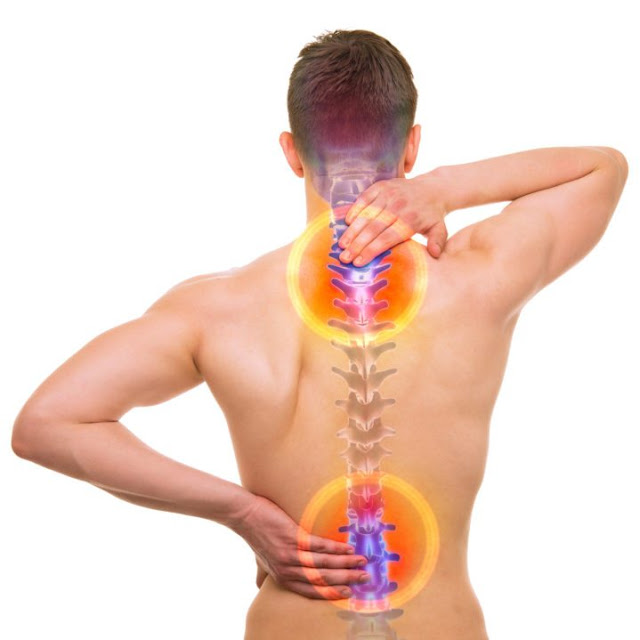

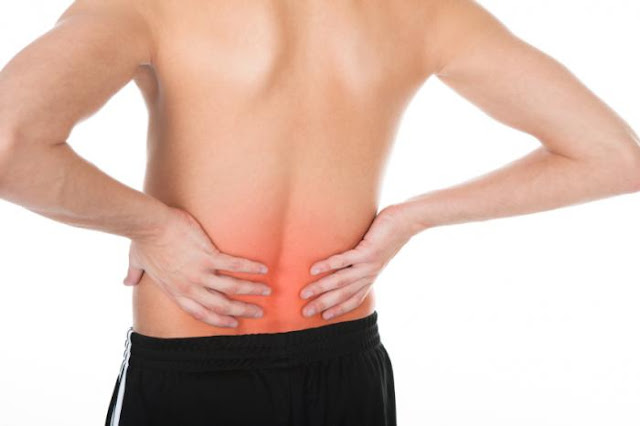
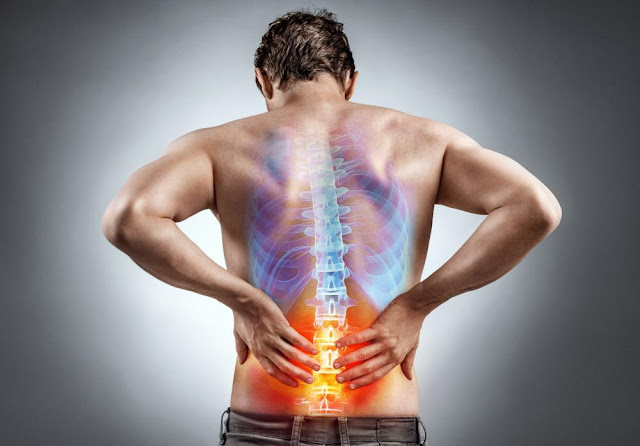
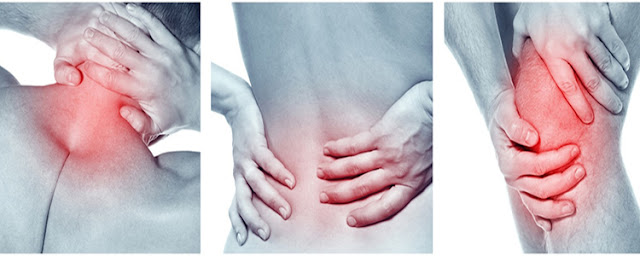
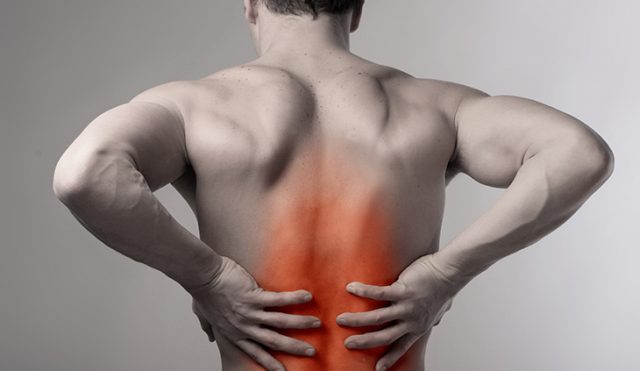
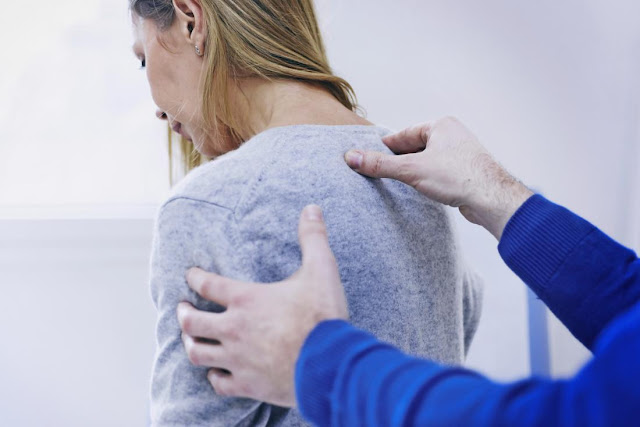
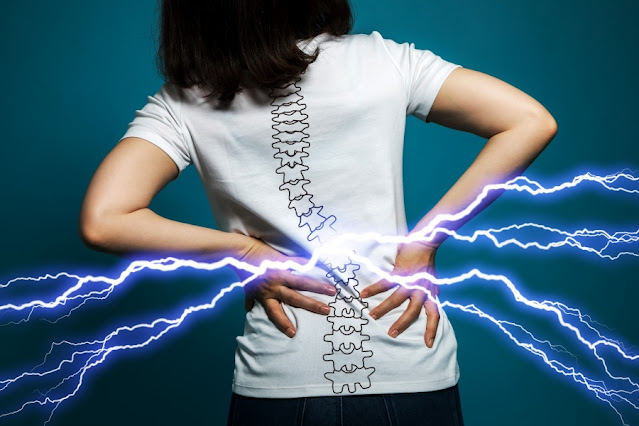










1 Comments
Very best sucess effort👍👍👍
ReplyDelete